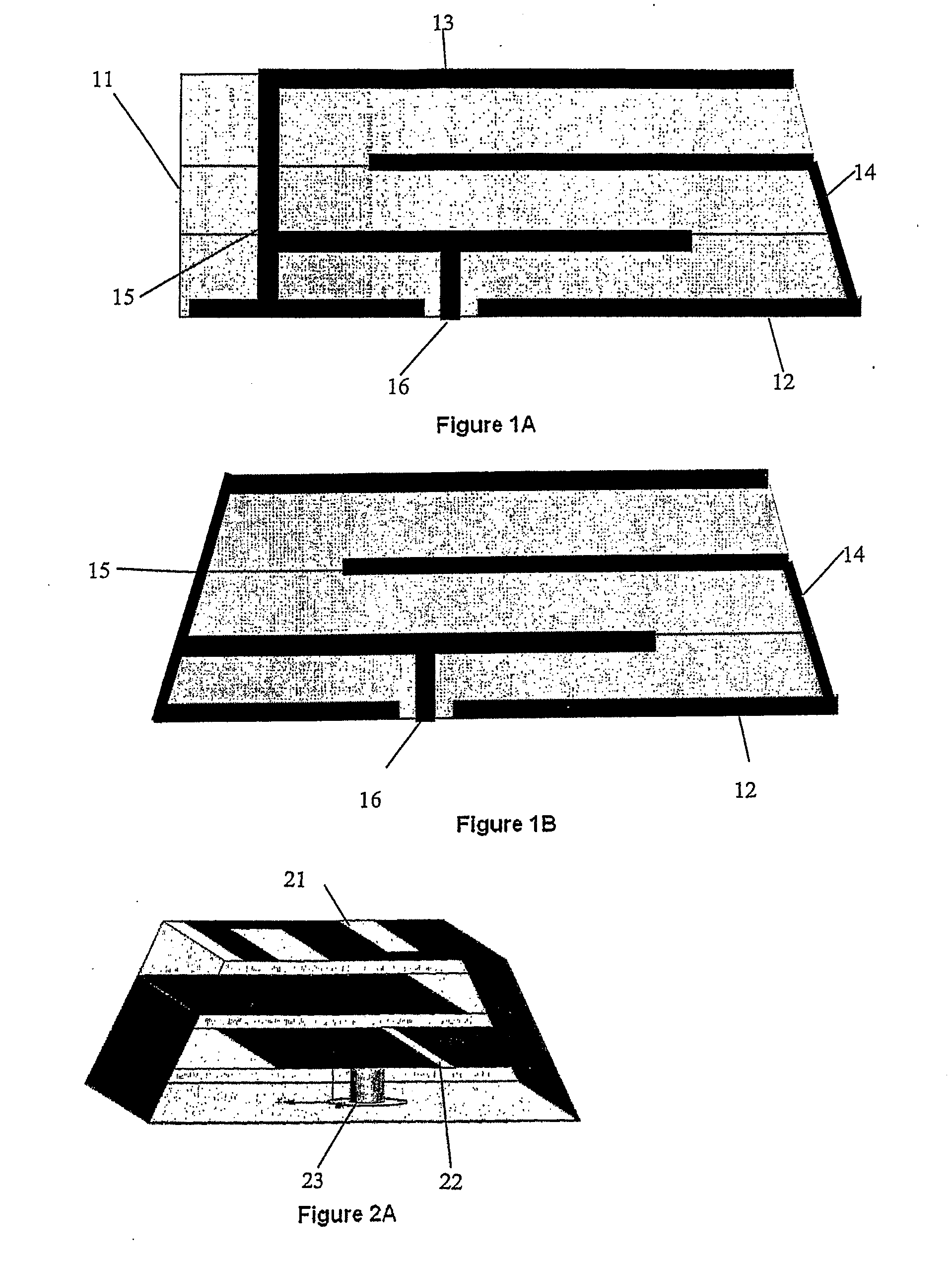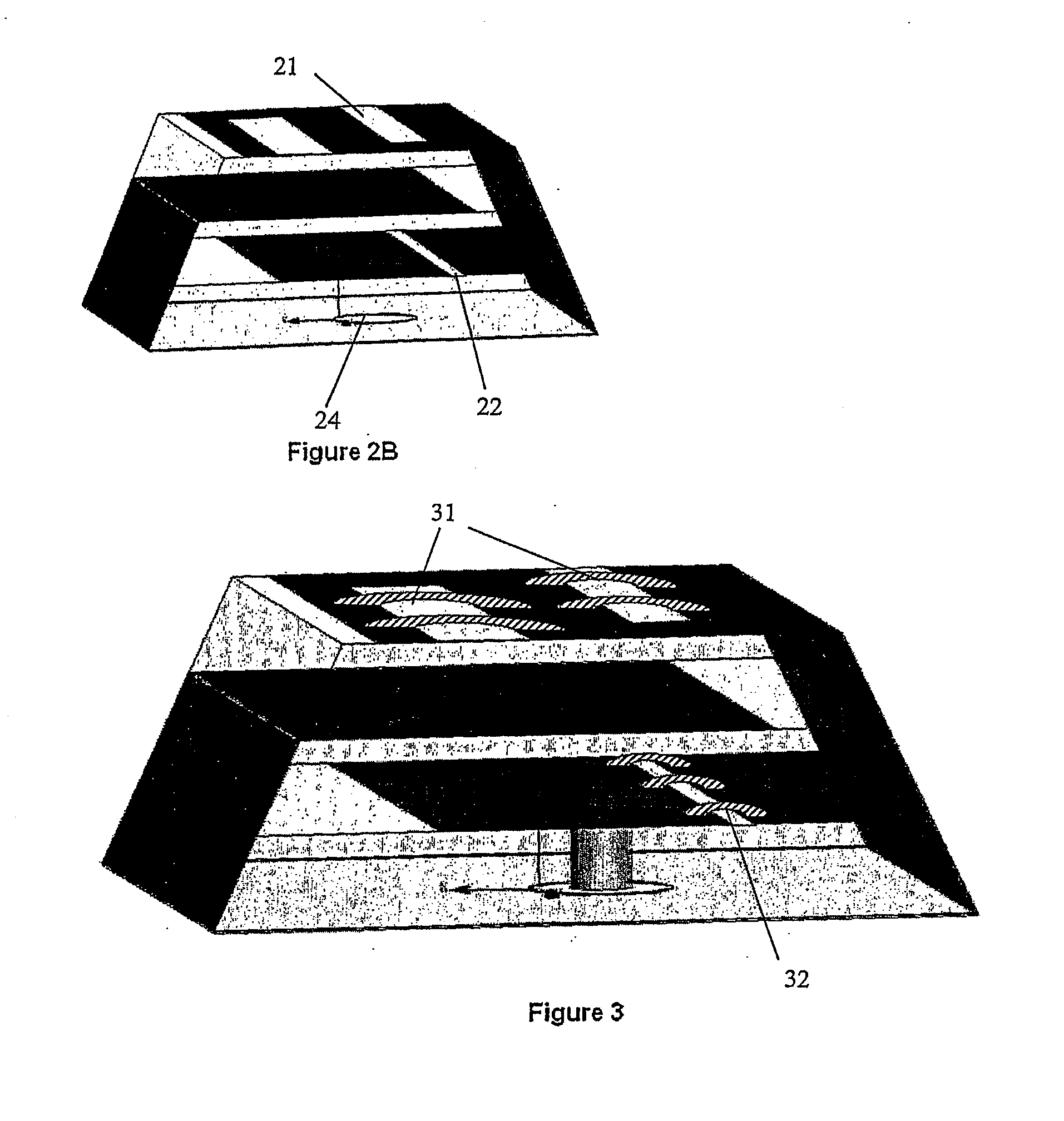Integrated tunable micro-antenna with small electrical dimensions and manufacturing method thereof
a micro-antenna and electrical dimension technology, applied in the direction of waveguide devices, electrical apparatus, structural forms of radiation elements, etc., can solve the problems of reducing efficiency and bandwidth, reducing the physical dimension of such planar structures, and reducing so as to achieve significant antenna size reduction and increase the capacity of being tunable
- Summary
- Abstract
- Description
- Claims
- Application Information
AI Technical Summary
Benefits of technology
Problems solved by technology
Method used
Image
Examples
Embodiment Construction
[0037]Next, the preferred embodiments of the present invention will be completely described, with reference to the appended drawings. A way to understand the preferred embodiments of the invention include their observation in the context of wireless communication devices and more specifically in the context of antennas for microsystems. However, it should be pointed out that the preferred embodiments also apply to different contexts, such as its application in mobile phones, monitoring sensors and wireless smart cards, within other related examples using antennas for send / receive data through a medium.
[0038]Next will be described a structure for the micro-antenna that can be used in a device for personal communications. A method to manufacture the micro-antenna, compatible with the process used for IC manufacturing, will be described, as well as how the slots, allowing the antenna dimension reduction, are inserted as well as how to adjust its input impedance. It will also be describ...
PUM
| Property | Measurement | Unit |
|---|---|---|
| Frequency | aaaaa | aaaaa |
| Frequency | aaaaa | aaaaa |
| Length | aaaaa | aaaaa |
Abstract
Description
Claims
Application Information
 Login to View More
Login to View More - R&D
- Intellectual Property
- Life Sciences
- Materials
- Tech Scout
- Unparalleled Data Quality
- Higher Quality Content
- 60% Fewer Hallucinations
Browse by: Latest US Patents, China's latest patents, Technical Efficacy Thesaurus, Application Domain, Technology Topic, Popular Technical Reports.
© 2025 PatSnap. All rights reserved.Legal|Privacy policy|Modern Slavery Act Transparency Statement|Sitemap|About US| Contact US: help@patsnap.com



